The digital landscape thrives on visually appealing and functional websites. A professional online presence is crucial for businesses and individuals, and web templates offer a cost-effective and efficient solution. This article provides a comprehensive guide on how to sell web templates, covering the advantages, the process, essential tips, helpful resources, and use cases, and concluding with key takeaways for success in this dynamic market.
The Advantages of Selling Web Templates
Selling web templates offers a compelling business opportunity with numerous advantages. It allows designers and developers to leverage their skills and generate passive income. Furthermore, it caters to the ever-growing demand for affordable and efficient website solutions.
Low Barrier to Entry
Selling web templates requires design skills and knowledge of web development, but the initial investment is relatively low compared to starting a full-scale web design agency or developing custom websites for each client. You don't need expensive equipment or a large team to get started. This makes it an accessible business venture for individuals with the necessary skills.
Scalability
Once a template is created, it can be sold repeatedly to multiple customers without incurring additional production costs. This generates the potential for passive income, where you earn money from sales without actively working on each sale. As your portfolio of templates grows, so does your potential income.
Consistent Demand
The need for websites is constantly growing as more businesses and individuals establish their online presence. Web templates offer a quick and affordable solution for those who may not have the budget or time for custom web development. This consistent demand provides a stable market for web template sellers.
Flexibility and Control
You have complete control over your web template business. You can choose your niche, set your prices, manage your sales channels, and work from anywhere in the world. This flexibility allows you to tailor your business to your lifestyle and preferences. You can also choose to work on your templates full-time or part-time, depending on your availability.
Portfolio Building
Creating and selling web templates allows you to build a strong portfolio of your design and development skills. This portfolio can be invaluable for attracting future clients or job opportunities in the web design and development industry. Each template you create and sell serves as a testament to your abilities and experience.
How to Sell Web Templates: A Step-by-Step Guide
Selling web templates involves several key steps, from design and development to marketing and customer support.
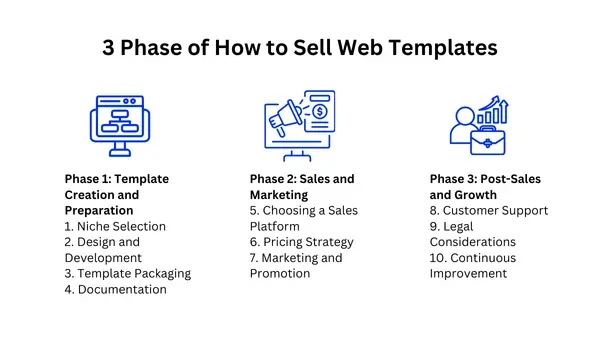
Phase 1: Template Creation and Preparation
1. Niche Selection: Identifying a specific niche is crucial. Focusing on a target audience, like restaurants, photographers, or e-commerce stores, allows you to create templates that cater to their unique needs and increase your chances of attracting buyers.
2. Design and Development: This is the core of your business. Create high-quality, visually appealing, and user-friendly templates. Ensure they are responsive, cross-browser compatible, and optimized for performance. Consider incorporating modern design trends and features. Thorough testing across different devices and browsers is essential.
3. Template Packaging: Organize your template files clearly and concisely. Include all necessary files, such as HTML, CSS, JavaScript, images, and documentation. A well-structured package makes it easier for buyers to understand and use your templates.
4. Documentation: Comprehensive documentation is vital. Explain how to install, customize, and use the template. Include clear instructions, screenshots, and even video tutorials. Good documentation reduces support requests and increases customer satisfaction.
Phase 2: Sales and Marketing
5. Choosing a Sales Platform: Several platforms cater specifically to selling digital products, including web templates. These platforms often handle payment processing, delivery, and even marketing. Alternatively, you can create your website and manage sales directly.
6. Pricing Strategy: Research the market to determine competitive pricing. Consider factors like the complexity of the template, the niche it serves, and the features it offers. You can also offer different pricing tiers for different levels of support or features.
7. Marketing and Promotion: Promote your templates through various channels, including social media, online forums, and relevant communities. Consider creating a portfolio website to showcase your work. Offer free templates or discounts to attract potential customers. Search engine optimization (SEO) is also crucial for driving organic traffic to your listings.
Phase 3: Post-Sales and Growth
8. Customer Support: Providing excellent customer support is essential for building a strong reputation. Respond promptly to inquiries, offer assistance with installation and customization, and address any issues that arise. Happy customers are more likely to leave positive reviews and recommend your templates.
9. Legal Considerations: Ensure you understand the licensing terms for your templates. Clearly define what buyers are allowed to do with the templates and what restrictions apply. Consider using a standard license agreement to protect your work.
10.Continuous Improvement: Regularly update your templates to incorporate new features, address bug fixes, and stay current with design trends. Solicit feedback from customers and use it to improve your templates and services.
Tips for Success in Selling Web Templates
Prioritize Quality
Meticulous Design and Development: Create visually stunning, user-friendly, and highly functional templates. Pay attention to details like typography, web color schemes, and overall aesthetics.
Cross-Browser Compatibility and Responsiveness: Ensure your templates work seamlessly across different browsers and devices (desktops, tablets, and mobile phones).
Performance Optimization: Optimize your templates for fast loading times, which is crucial for user experience and search engine rankings.
Stay Ahead of the Curve
Industry Trends: Keep up with the latest design trends, technologies, and user interface best practices.
Continuous Learning: Regularly update your skills to stay competitive. This could involve learning new programming languages, design tools, or marketing techniques.
Provide Exceptional Customer Experience
Responsive Support: Offer timely and helpful support to your customers. Address their questions and concerns promptly and professionally.
Detailed Documentation: Create comprehensive and easy-to-understand documentation for each template. This will help customers use your templates effectively and reduce the need for support.
Go the Extra Mile: Offer additional services like customization, training, or ongoing support to build stronger customer relationships.
Effective Marketing and Promotion
Targeted Marketing: Identify your ideal customers and tailor your marketing efforts to reach them.
Multiple Channels: Utilize various channels like social media, online marketplaces, content marketing, and email marketing to promote your templates.
SEO Optimization: Optimize your website and template listings for search engines to increase organic traffic.
Build a Strong Online Presence: Create a professional portfolio website or online store to showcase your templates and build credibility.
Build a Strong Foundation
Portfolio Development: Create a diverse portfolio of high-quality templates to attract potential buyers and showcase your skills.
Niche Specialization: Consider specializing in a specific niche to differentiate yourself from the competition.
Branding and Storytelling: Develop a strong brand identity and tell your story to connect with potential customers on a deeper level.
Continuous Improvement
Feedback Analysis: Regularly solicit and analyze customer feedback to identify areas for improvement.
Data-Driven Decisions: Track your sales data to understand what's working and what's not. Use this information to refine your pricing, marketing, and product development strategies.
Adaptability: Be willing to adapt to changing market conditions and customer preferences.
Community Engagement
Online Forums and Communities: Participate in relevant online communities and forums to network with other designers, developers, and potential customers.
Collaborations: Consider collaborating with other designers, developers, or marketers to expand your reach and create more value for your customers.
Use Cases for Web Templates
These pre-designed layouts streamline website creation, allowing users to establish an online presence quickly and efficiently. By providing structured frameworks, templates empower individuals and businesses to focus on content rather than complex coding. Web templates cater to a wide range of use cases, including:
Business Websites
These templates provide a professional online presence for companies, showcasing their services and establishing credibility. They often incorporate features like contact forms, service pages, and client testimonials.
E-commerce Websites
Designed for online stores, these templates facilitate product display, secure transactions, and efficient inventory management. They prioritize user-friendly navigation and clear product presentation.
Portfolio Websites
Ideal for creatives, these templates highlight visual work and professional skills. They emphasize image galleries, project descriptions, and personal branding.
Blog Websites
These templates focus on content delivery and audience engagement, featuring layouts optimized for readability and social sharing. They often include comment sections, subscription forms, and category organization.
Designed for specific marketing campaigns, these templates aim to convert visitors into leads or customers. They typically feature a clear call-to-action, concise messaging, and compelling visuals.
Non-profit Websites
These templates help organizations communicate their mission, solicit donations, and engage volunteers. They often include donation forms, event calendars, and impact stories.
Educational Websites
Tailored for online learning platforms, these templates facilitate course delivery, student interaction, and content management. They prioritize clear course structures, video integration, and progress tracking.
Personal Websites
These templates allow individuals to create a unique online identity, share their interests, and connect with others. They can be used for personal blogs, resumes, or online portfolios.
Web Templates Marketplaces & Platforms
Several marketplaces and platforms can assist in selling web templates. Here's a comparison of some popular options. Each platform offers unique features and caters to different seller needs, impacting visibility and potential earnings. Understanding these distinctions is crucial for selecting the right platform to maximize your template sales.
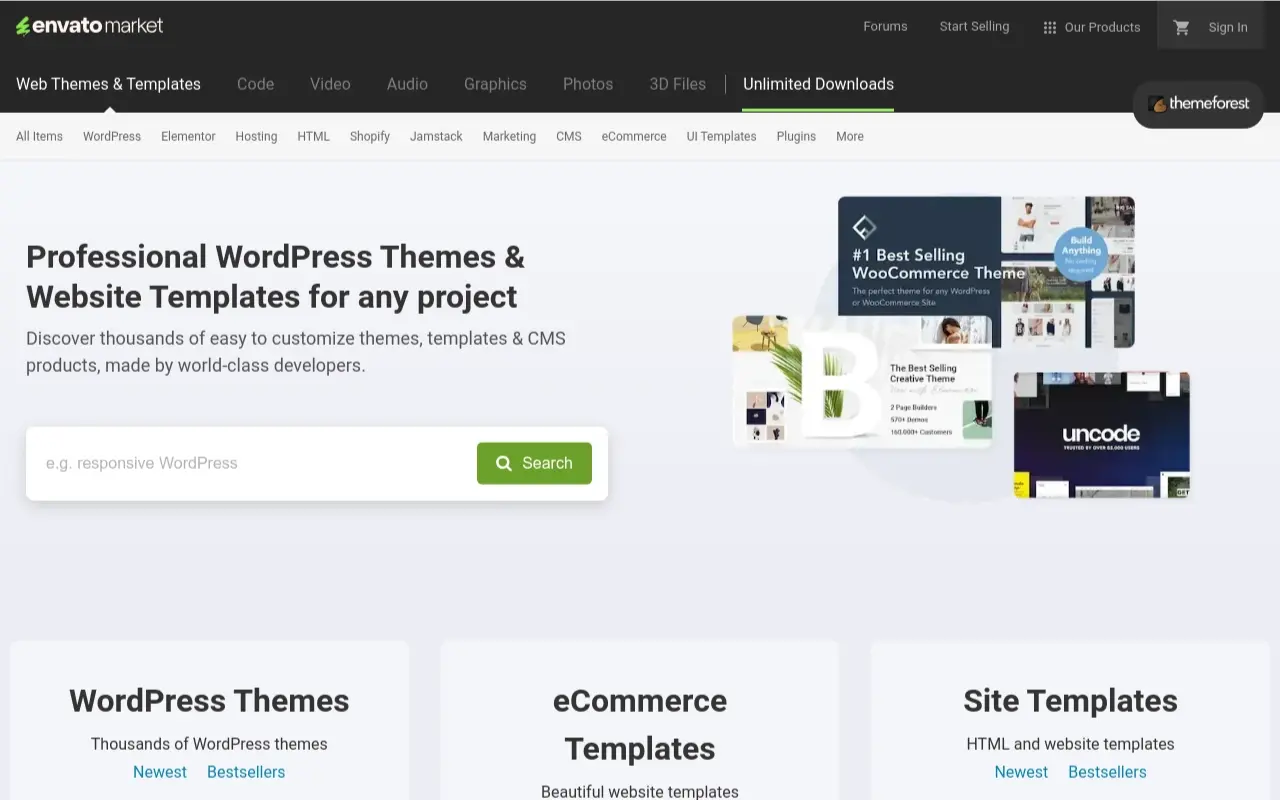
Large marketplace, built-in audience.
Features: Extensive reach, high visibility, established buyer base. It offers item review processes and detailed sales analytics for sellers.
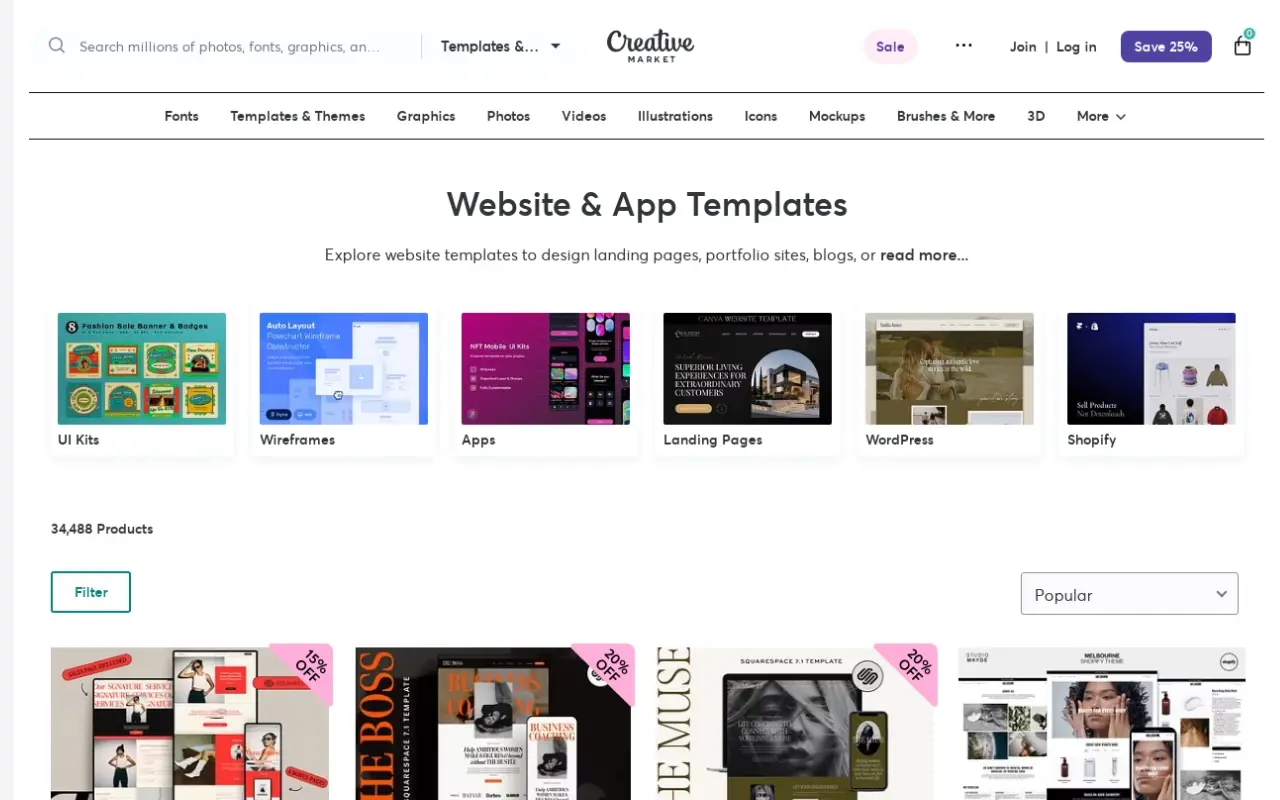
Focus on design assets and a strong community.
Features: Curated selection, emphasis on quality, access to a creative community. It provides tools for product showcasing and promotional capabilities.
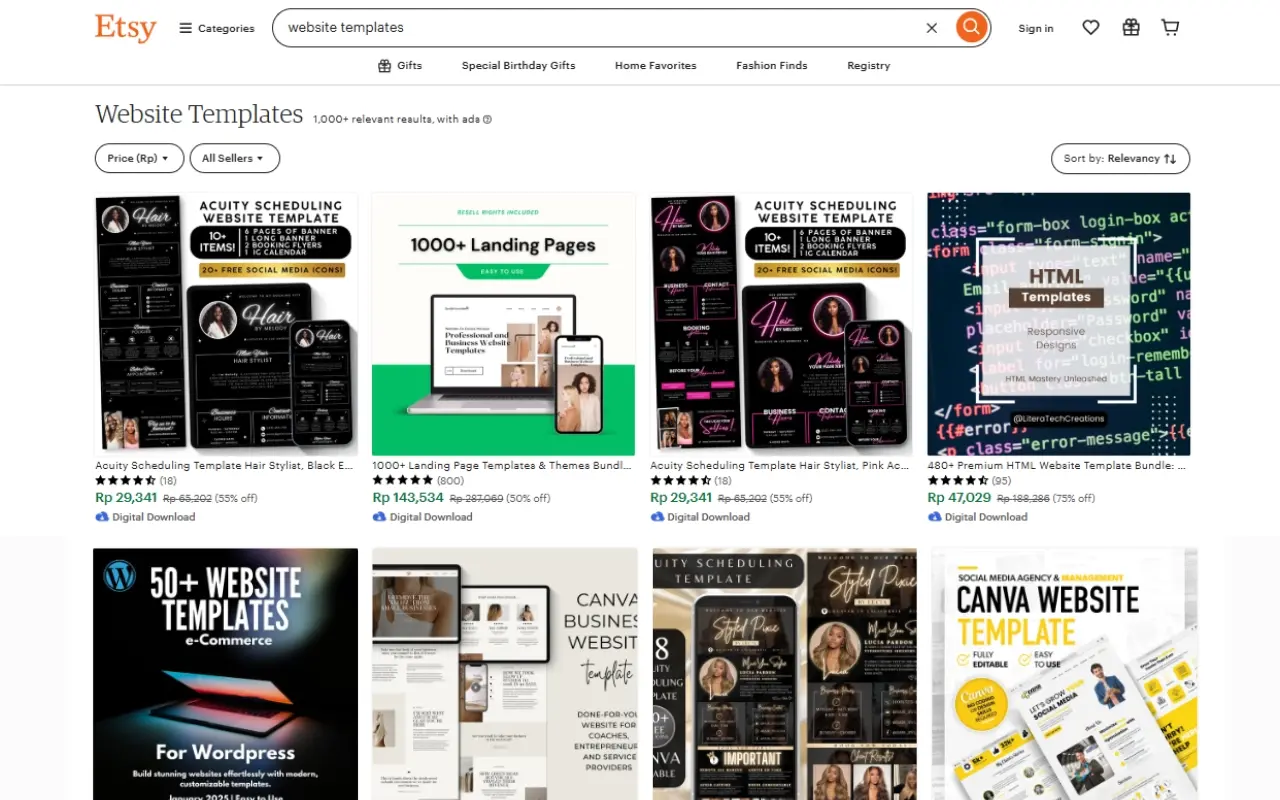
Growing marketplace for digital products.
Features: Handmade and unique items, an established platform for selling digital goods. It allows for listing customization and direct customer communication.
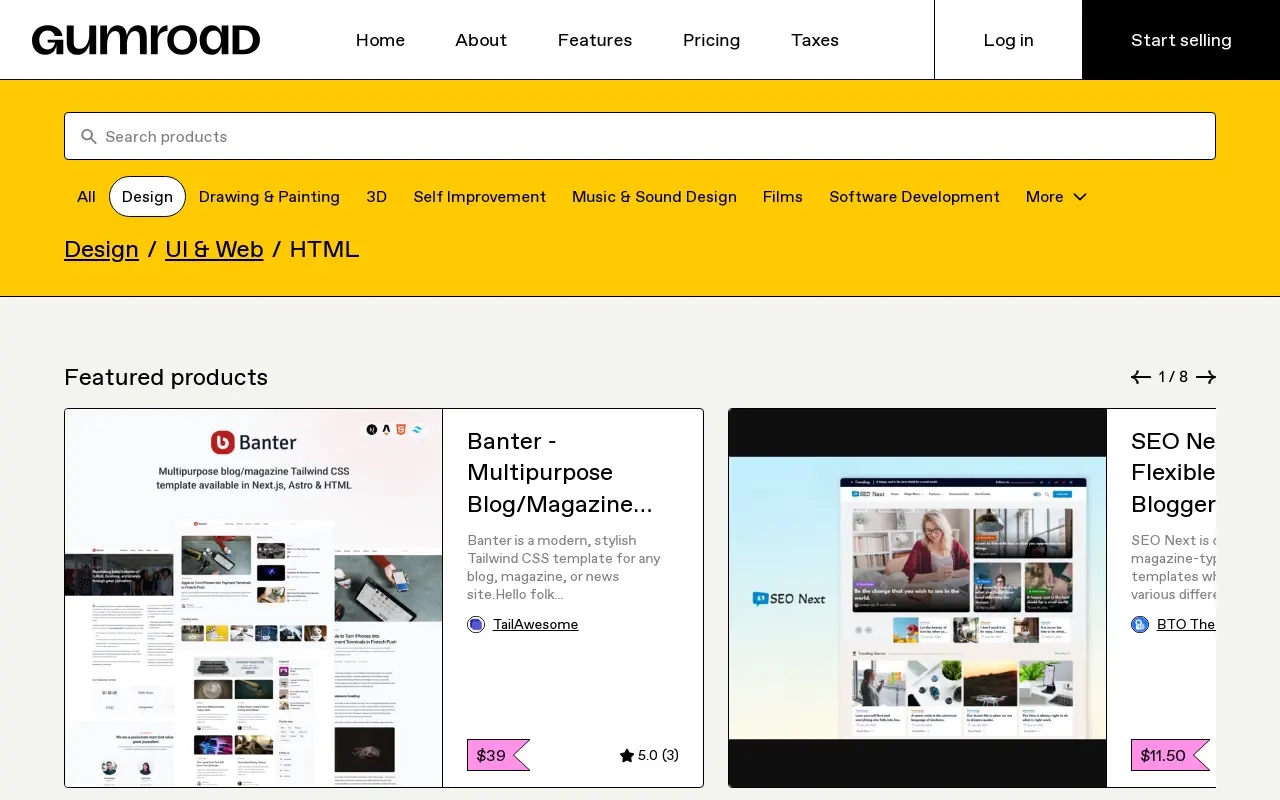
Direct sales, flexible pricing.
Features: Control over branding and customer relationships, customizable sales pages. It includes features for managing subscriptions and offering various product versions.
Own Website
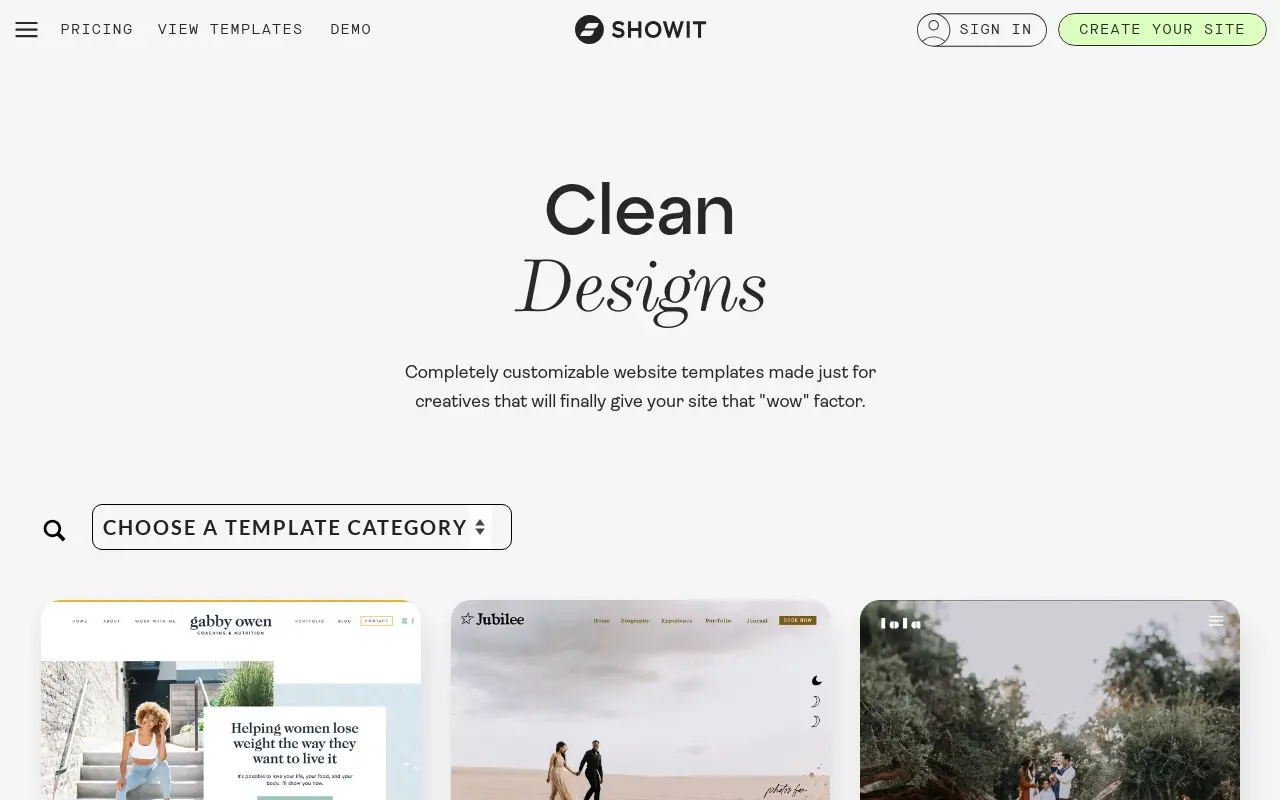
Showit is one of many examples of a website platform with full control, branding, and customer relationships.
Features: Complete control over design, marketing, and customer experience, no platform fees. It allows for integrated payment gateways and custom analytics tracking.
Web Templates Marketplaces & Platforms Comparison
| Platform | Features | Pros | Cons |
|---|---|---|---|
| ThemeForest | Large marketplace, built-in audience | High visibility, established platform | High commission fees, competitive marketplace |
| Creative Market | Focus on design assets, strong community | Good for designers, strong branding | Lower traffic |
| than ThemeForest | |||
| Etsy | Growing marketplace for digital products | Easy to set up, low fees | Less focused on web templates specifically |
| Gumroad | Direct sales, flexible pricing | Control over branding and customer relationships | Requires self-promotion |
| Own Website (using Easy Digital Downloads or similar plugin) | Full control, branding, customer relationships | Maximum flexibility, no commission fees | Requires technical setup and marketing effort |
Conclusion
Selling web templates offers a viable and rewarding business opportunity in the ever-expanding digital landscape. By focusing on quality design, effective marketing, and excellent customer support, you can build a successful business and generate a substantial income. Choosing the right sales platform, understanding your target audience, and continuously improving your offerings are crucial for long-term success.
While the market can be competitive, with dedication, creativity, and a strategic approach, you can carve out a niche and thrive in the world of web template sales. Remember to stay updated with the latest trends, engage with your community, and always strive to provide value to your customers. By following the advice and strategies outlined in this article, you'll be well-equipped to navigate the market and achieve your goals in the exciting world of web template sales.
Frequently Asked Questions
Can I use WooCommerce shortcodes in email templates?
You can use WooCommerce shortcodes if you send emails via WooCommerce, but this is typically not possible in other web clients. So, it will largely depend on where you send your messages from.
Will AI replace web developers and web designers in the website development industry?
No, AI is unlikely to replace web developers and designers. Instead, it automates routine web development tasks, allowing professionals to focus on more complex and creative aspects of website creation.
What is social proof in digital marketing?
Social proof in digital marketing is a psychological phenomenon where brands use tools like online reviews, customer testimonials, and influencer marketing to influence the purchase decisions of potential customers by showing them the correct behaviour of others.

Audee Mirza is a graphic designer and WordPress developer at audeemirza.com who resides in Surabaya, Indonesia. She's also the author of Graphic Identity Blog, a professional logo designer, and often creates vector illustrations for clients and marketplaces. She enjoys good typography design and all kinds of animation.
View all posts by Audee Mirza



















